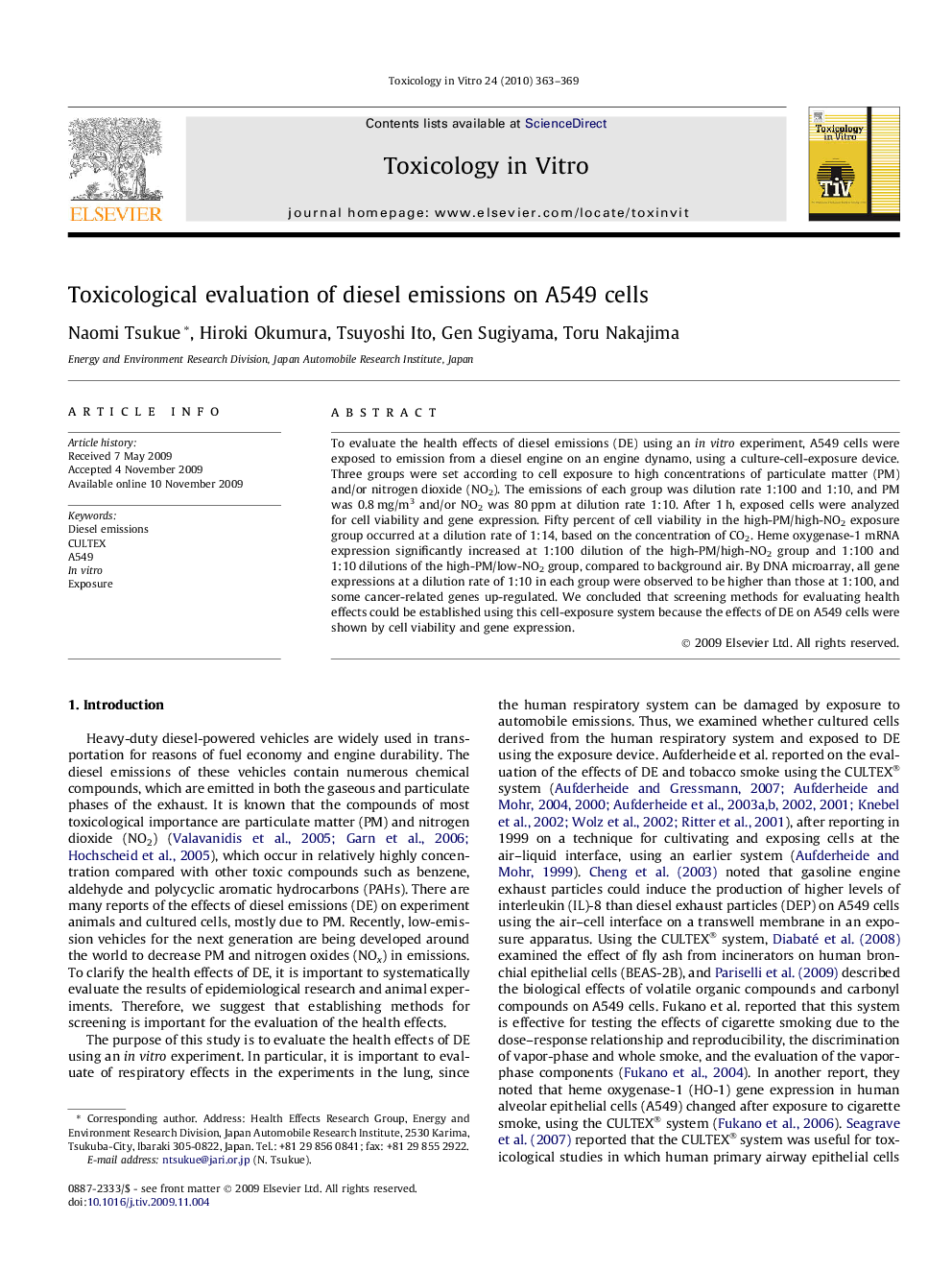| Article ID | Journal | Published Year | Pages | File Type |
|---|---|---|---|---|
| 2603323 | Toxicology in Vitro | 2010 | 7 Pages |
To evaluate the health effects of diesel emissions (DE) using an in vitro experiment, A549 cells were exposed to emission from a diesel engine on an engine dynamo, using a culture-cell-exposure device. Three groups were set according to cell exposure to high concentrations of particulate matter (PM) and/or nitrogen dioxide (NO2). The emissions of each group was dilution rate 1:100 and 1:10, and PM was 0.8 mg/m3 and/or NO2 was 80 ppm at dilution rate 1:10. After 1 h, exposed cells were analyzed for cell viability and gene expression. Fifty percent of cell viability in the high-PM/high-NO2 exposure group occurred at a dilution rate of 1:14, based on the concentration of CO2. Heme oxygenase-1 mRNA expression significantly increased at 1:100 dilution of the high-PM/high-NO2 group and 1:100 and 1:10 dilutions of the high-PM/low-NO2 group, compared to background air. By DNA microarray, all gene expressions at a dilution rate of 1:10 in each group were observed to be higher than those at 1:100, and some cancer-related genes up-regulated. We concluded that screening methods for evaluating health effects could be established using this cell-exposure system because the effects of DE on A549 cells were shown by cell viability and gene expression.
